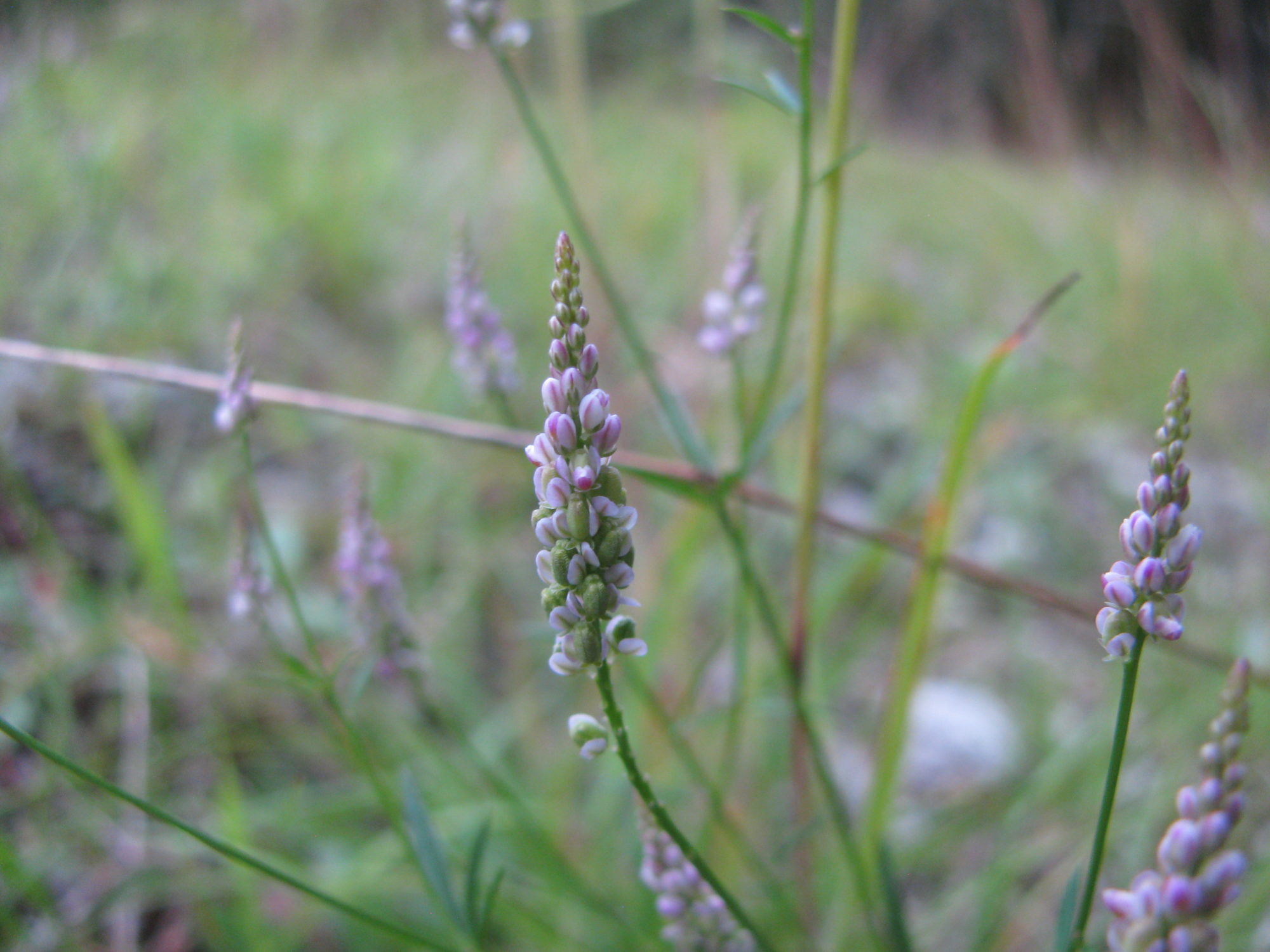I was hiking along a trail that goes along the cleared area under a power line. This sandy strip under the power line allows unusual species to flourish as it is kept open. I was very excited to find a tiny plant called whorled milkwort or Polygala verticillata. This beautiful species is in the milkwort family or the Polygalaceae. I’ve found a previous milkwort species, racemed milkwort (Polygala polygama), along a power line as well!

The beautiful flowers of the whorled milkwort, with green seeds at the bottom of the flower spike (Polygala verticillata, Polygalaceae)
The milkwort family is one of my favorite families due to their complex flowers. The two pink wings covering the slides of the flowers are sepals. The other three sepals are green and small, and are found at the bottom of each flower. There are three petals, with one forming a tube with fringe at the end which protects the stamens (male parts) and the style (female part) (Michigan Flora Online: Polygala). The flowers are semi-closed in these photos as it was an overcast day.

The lateral sepals are pink with the dark pink stripe. You can see the other green sepals at the bottom of the flowers. The petals are dark pink and have a slight fringe at the end (Polygala verticillata, Polygalaceae)
This species is found in sandy fields, hills and at the edges of woodlands (Michigan Flora Online: Polygala). That means that the sandy area under the cleared power line is a perfect habitat! Whorled milkwort is found along the East Coast from Maine to Florida and west to Montana and Texas. This is a special concern sepcies in Rhode Island (USDA Plant Profile: Polygala nuttallii).

The sandy and open habitat where whorled milkwort is found (Polygala verticillata, Polygalaceae)
Whorled milkwort is identified by its thin leaves that attach to the stem in clumps, rounded sepals and very small flowers in long bunches (inflorescences) (Go Botany: Polygala verticillata).

You can see the round sepals and the tall flower inflorescences of the whorled milkwort (Polygala verticillata, Polygalaceae)

One thought on “Whorled milkwort”